In case you don’t know, I’m really into paint making and I make the majority of the colors I work with. During my time experimenting with making paint, I’ve generally avoided the mere thought of using any sort of fillers or extenders in my paints since I’ve prioritized quality over quantity when making paint as I’m crafting it to accommodate the specific properties I like rather than selling a consistent product.
Recently I was playing with a limited color palette I found online and I noticed how two of my colors, Phthalo Blue and Pyrrole Red, were jarringly transparent and glossy compared to the rest, and that reflected in the mix. Naturally, this is caused by the individual properties of the pigment with some pigments naturally being more opaque and others being more transparent as well the ratio of dispersed pigment to binder. This time it got me thinking, if I wanted to make these colors more opaque and and matte, how would I go about it without reformulating a new paint all together? My default solution would be to introduce Titanium White as that’s an opaque and and somewhat matte color which wouldn’t interfere with the temperature of the color, the only problem being it would make the color lighter and more pastel looking which I don’t really want. In that moment, I remembered the gesso I made. The formula to make gesso is shockingly similar to just making ordinary Titanium White acrylic paint but with the addition of a couple additives, one of those additives being Calcium Carbonate; essentially pure powdered chalk. I’ve heard of it being used as a filler by some paint brands as well as its use in aiding pigment dispersion so I figured why not experiment with it?
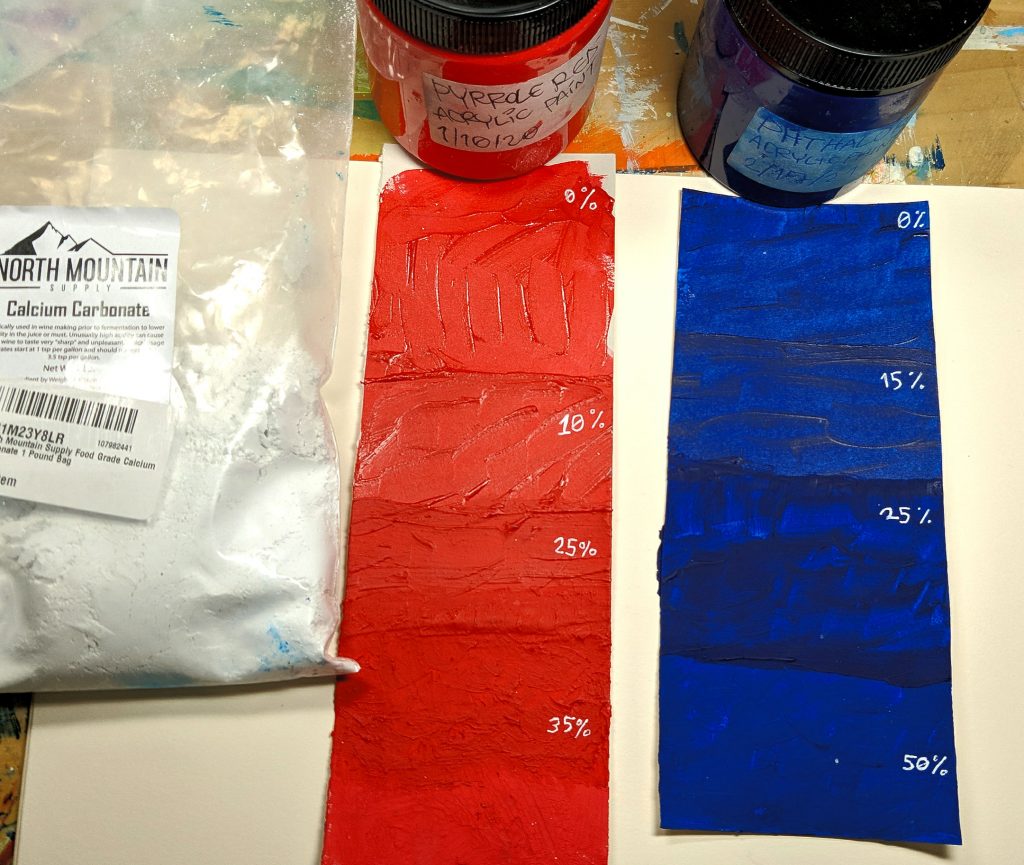
I performed my experiment by getting two sheets of vertical paper and painting a portion of it with the color. After each sample, I (sloppily) measured out a bit of the calcium carbonate and introduced it into the mixture. I initially mixed it with a palette knife, but I later decided to use a paint muller which mixed it much more evenly than the palette knife. I did this until I reached 1:1 paint to calcium carbonate.
While playing around with it, I found the results to be interesting! The more calcium carbonate I included to the mixture, the more the opacity increased and the gloss decreased. What was more surprising to me was the fact that the color itself was largely unaffected until it had 50% calcium carbonate. Ordinarily, just adding just 5% Titanium White to the mix would completely transform the color. My theory is that the chalk becomes comparatively transparent when it’s introduced to the water in the binder.
While introducing the calcium carbonate mitigated the issues I sought out to resolve, there was some other effects I didn’t account for. First, the more calcium carbonate I introduced into the paint, the quicker the paint dried. The 50% mixture dried completely within minutes following application. Outside of that, the paint became dramatically thicker with the more calcium carbonate I introduced into the mix. Whether this is a pro or con is up to the artist to decide, it was definitely fun to paint with in the 50% mixture as it retained every hair of each brush stroke and applied on like cake icing. The calcium carbonate also changes the texture of the paint entirely; without the addition of any calcium carbonate to the paint, it dried to a hyper sleek and smooth somewhat tacky feel. However, with the addition of calcium carbonate, the paint dried to a very pleasant velvet texture I couldn’t help but pet.
My main concern however is the durability of the paint with this addition. I noticed in the application of the 50% chalk Pyrrole Red mixture, tiny cracks form as the water evaporates and the paint dries. I’m sure this could be mitigated through thinner application and the addition of more binder. Strangely, I didn’t see this appear in the Phthalo Blue which makes me think it may have to do with how thoroughly I mixed the calcium carbonate into the paint as I only began using the glass muller following the completion of the Pyrrole Red samples.
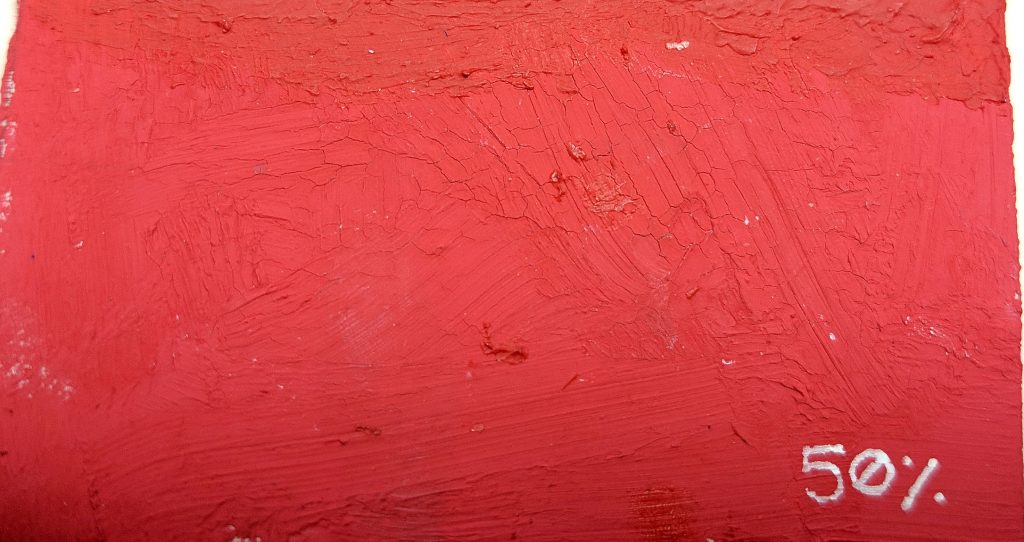
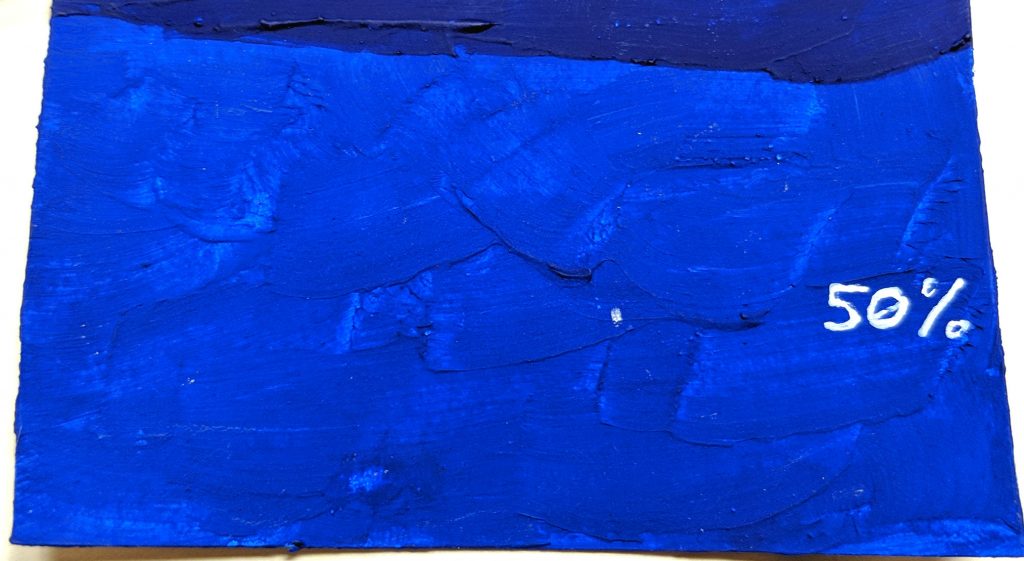
In conclusion, I’m very happy to have experimented with the addition of calcium carbonate into my paint and I’ll be sure to keep it in mind when making new formulations with other high tinting transparent pigments. It seems the sweet spot on both of them is between 10% and 25% added calcium carbonate. With acrylic paint being water based and so stable, I’ll be sure to research and experiment other fillers and additives in the future. The modularity of acrylic paint is what made me fall in love with it to begin with.
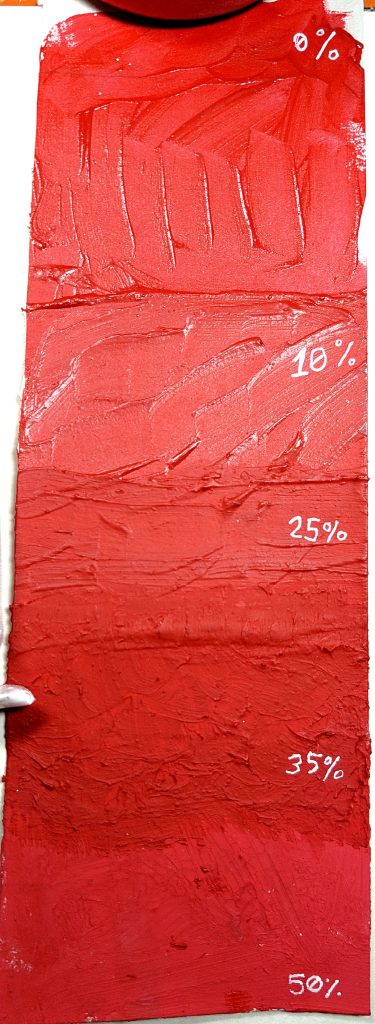
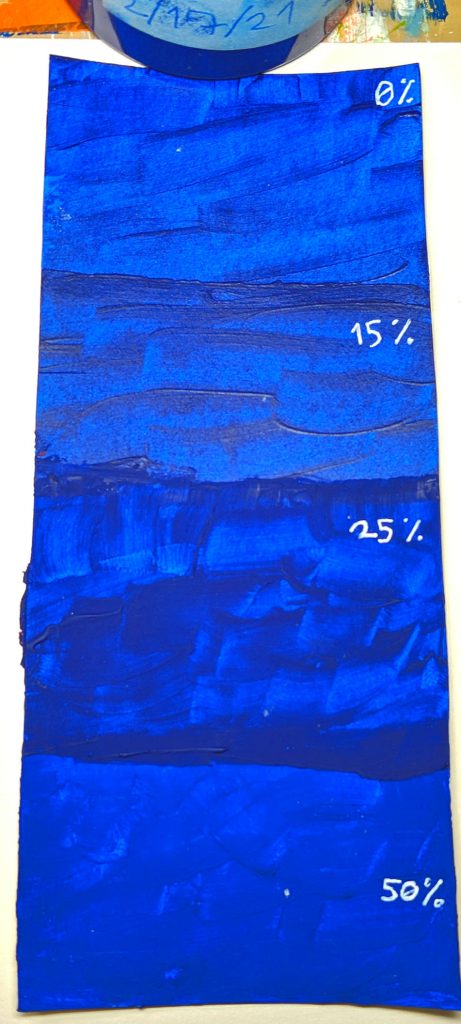
yooo i didnt know you MADE your own paint thats super fuckin baller i need to look into that
thank you for posting this, you were the only person that has answered my question. can I mix calcium carbonate with my acrylic paints.